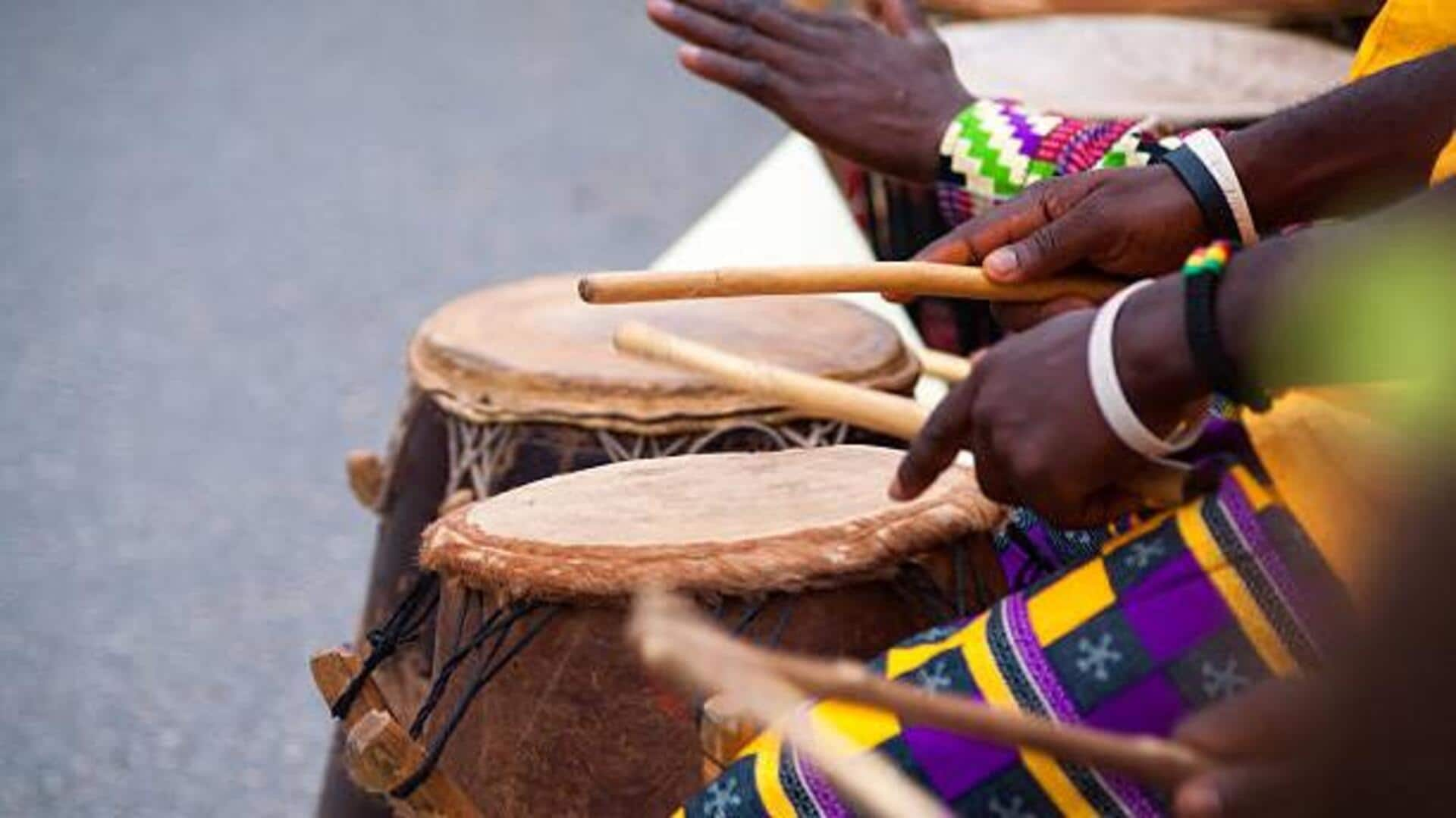
All about percussion music
What's the story
Africa's percussion rhythms are an integral part of its cultural identity, providing a unique window into the continent's diverse traditions. These rhythms are not merely music, but a language that narrates stories, emotions, and history. Knowing these beats can help you appreciate African culture and its impact on global music, on a deeper level. Here's how to connect with Africa's heartbeat through its percussion rhythms like a pro.
#1
The role of drums in African culture
In Africa, drums are more than just instruments; they are a way of life. They are used to communicate and in ceremonies, and at weddings, festivals, and rituals, drums can be found conveying the message or celebrating the occasion. Each region has its own style of drumming, which depicts its culture. Knowing about these styles can help you understand the social fabric and traditions of various African communities.
#2
Understanding polyrhythms
If you want to go deeper into African percussion, it's important to understand polyrhythms. Polyrhythms are an integral part of African percussion music. It involves playing multiple contrasting rhythms at once. This creates complex layers of sound, and musicians have to coordinate their skills well. One has to recognize patterns within the chaos to understand polyrhythms and appreciate how each rhythm contributes to the harmony.
#3
Instruments beyond drums
While drums are at the heart of African percussion, instruments such as shakers, bells, and xylophones also contribute significantly to building layers of rich sounds. Each instrument lends its unique touch to the group by offering varying tones or rhythmic accents. Delving into these instruments expands the knowledge of how eclectic sounds combine seamlessly in the realm of traditional African music.
#4
Learning from local experts
To truly grasp Africa's percussion rhythms like a pro, one must learn from local experts who have inherited this knowledge through generations. Engaging with experienced musicians offers practical insights into techniques that can't be learned solely from books or recordings alone. Such interactions provide firsthand experience on nuances specific only within certain communities' musical practices across Africa's vast landscape.